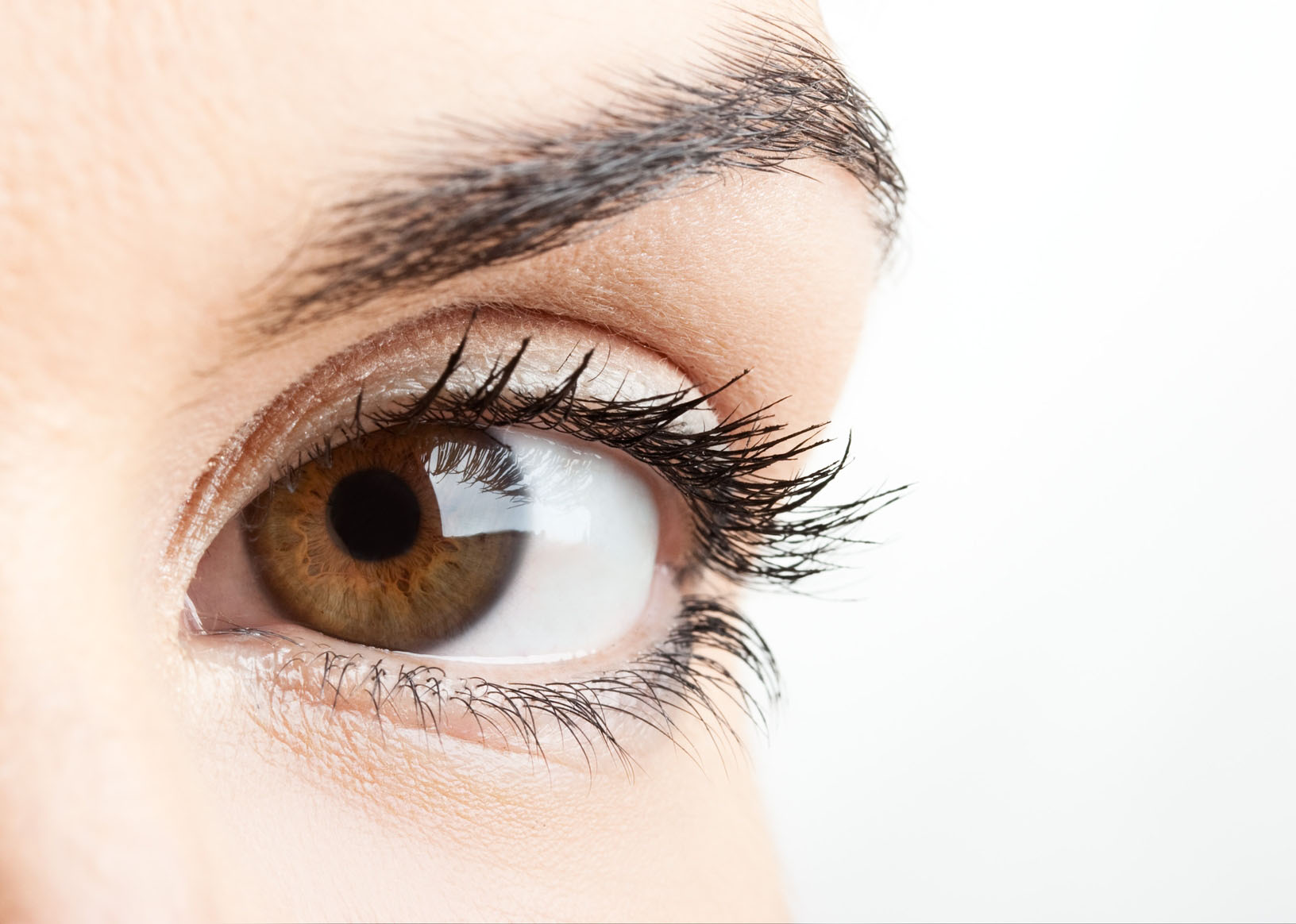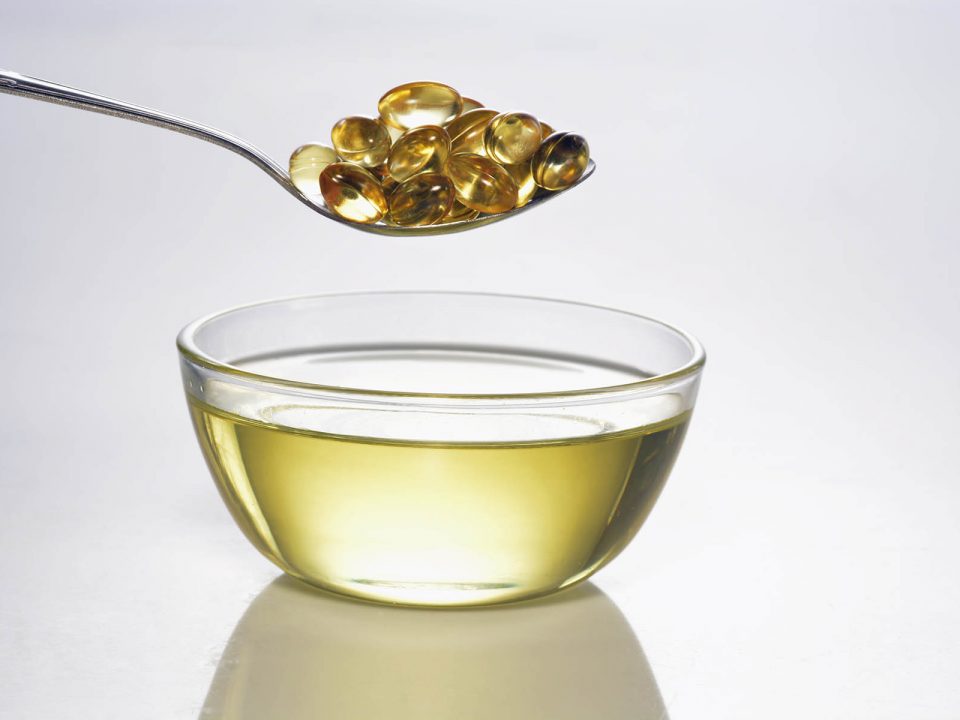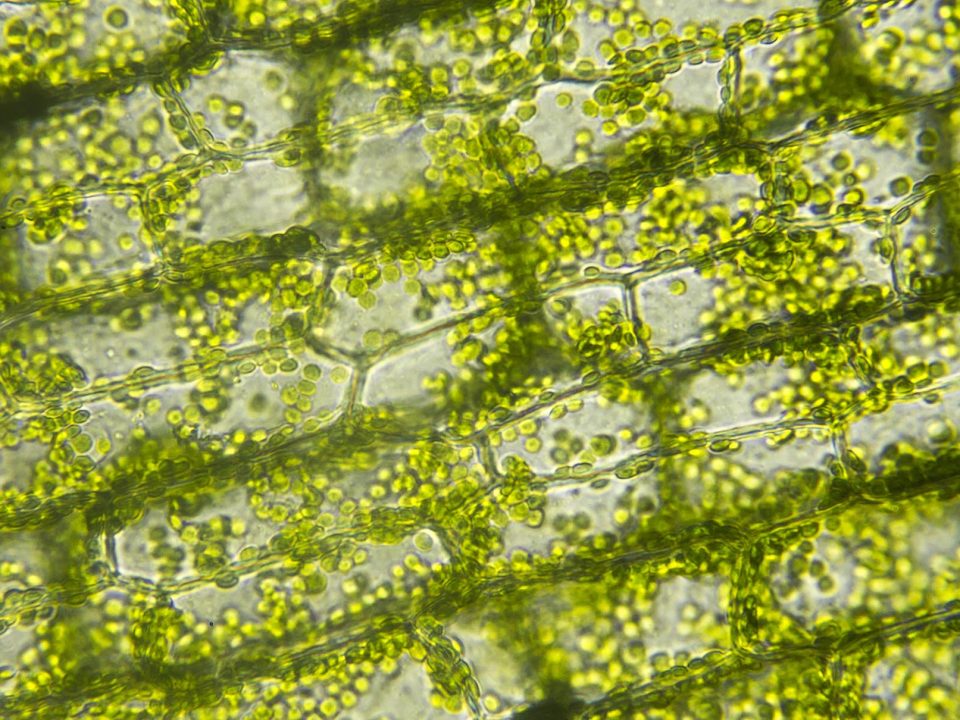Omega-3 Fatty Acids – A Multitude of Combination Possibilities

Omega-3 fatty acids, and especially the eicosapentaenoic acid (EPA) and docosahexaenoic acid DHA, are true allrounders for our health. Since they are a part of each and every individual cell they influence all bodily functions. The resulting anti-inflammatory messengers can spread out into any tissue via the bloodstream. For special purposes, such as skin care, or for special stages of the life, such as pregnancy, the omega-3 fatty acids can be combined specifically with other active ingredients. This ensures optimum supply of the body and the effect can even be strengthened by the various actions and influences of the substances. Another important aspect is that due to the new EU regulations regarding health-related advertising, the Health Claims Regulation can be an advantage in consumer communication and product marketing with a smart combination of ingredients.
Skin Care and Anti-Aging Effect
The omega-3 fatty acids EPA and DHA are also important for our biggest organ, the skin. With their anti-inflammatory effect they help with external skin symptoms, such as acne [1]. In case of neurodermatitis use of the omega-3 fatty acids in combination with omega-6 fatty acids is suggested in order to reach a balance in the inflammatory process. [2] In addition to the visible inflammation there are also hidden and slow inflammation processes. These processes are part of the aging, referred to as inflammaging. Researchers assume that inflammaging is a substantial part of the aging process in humans. As we get older, our ability to stop inflammatory processes decreases. [3] The skin is also affected and an influence of the anti-inflammatory omega-3 fatty acids may slow down the aging process of the skin as well. Moreover, fat has two additional functions in the skin. Higher fat contents in the skin provide for thicker skin and less wrinkles, and the natural thin fat film on the surface prevents that the skin loses its moisture, and as a result, also the soft feeling. For skin care products the omega-3 fatty acids EPA and DHA can be combined with vitamin A. Vitamin A attaches to special receptors, which influence the cell division in such a way that this process is not happening too slow or too fast. [4] Especially the outer layers of the skin are constantly renewed. Therefore a perfectly organized cell division is vital for the renewal of our skin. Vitamin A also allows for an activation of genes, which form enzymes, structural proteins, and further components of our epithelial cells. [5] The essential influence of vitamin A for the skin is also supported by the fact that dry skin is a typical symptom for a deficiency of vitamin A. [6] Omega-3 fatty acids EPA and DHA, as well as vitamin A, each in their own way, have a positive effect on health and looks of the skin, and in combination the effect even increases as compared to the effect of the individual substances alone. Another major advantage of the combination of omega-3 fatty acids and vitamin A is that the product can be advertised with a Health Claim: “Vitamin A contributes to
the conservation of normal skin.”
Pregnancy and Nursing Time
Luckily, today, the supplement of folic acid during the times of family planning and during pregnancy is quite normal, because an ample supply of folic acid reduces the risk for the baby to suffer one of the most common severe birth defects, the neural tube defect. Furthermore new studies prove that a sufficient folic acid level in the mother also significantly reduces the risk for the child to develop ADHD. [7] So food supplements in the diet of women are definitely justified. However, the use of omega-3 fatty acids EPA and DHA is quite often neglected. Sufficient supply with these essential nutrients is guaranteed if the diet includes ocean fish with high fat content, such as mackerel, salmon, herring, tuna, and anchovies once or twice per week. [8] People living in the landlocked countries of Europe only rarely have a diet with lots of fish. Therefore tests of the Omega-3 Index show that the levels in Germany and Spain, for example, are just above 7%, whereas the ideal range for the Omega-3 Index is defined between 8 and 11%. [9] During the sensitive stages of pregnancy and nursing, however, women have a much higher demand for EPA and DHA, since the baby needs the fatty acids for the development of its brain, eyes, and many other tissues. A supplement diet of the omega-3 fatty acids EPA and DHA is of special importance for pregnant and nursing women. Therefore a combination product of folic acid and EPA and DHA is indicated, which, of course can then be supplemented individually with further vitamins and minerals. The following health claims with 200 mg DHA and 550 μg folic acid per day, usually suggested during pregnancy, can be used to advertise the product.
• “A supplement of docosahexaenoic acid (DHA) by the mother contributes to a normal development of the eyes in the fetus and in the nursed infant.”
• “A supplement of docosahexaenoic acid (DHA) by the mother contributes to a normal development of the brain in the fetus and in the nursed infant.”
• “Folate contributes to the growth of maternal tissue during pregnancy.“
• “Folate plays a role in the cell division”

Depression
Depressions are a common problem all over Europe. Studies reveal an estimated number of 5 to 10 % off affected people. It may have the most different causes and forms, and therapy can be just as diversified. In addition to medicationbased treatment there are the psychotherapies, but exercise and a healthy diet also have a strong positive influence on depressions. Quite often a diet refers to the omega-3 fatty acids EPA and DHA. Omega-3 fatty acids mainly influence the dopamine balance, which is responsiblefor our motivation. [10,11] People with a too low balance of EPA and DHA have a higher risk to develop depressions. But even those people who already have depressions can profit from a dietary supplement of marine omega-3 fatty acids. Numerous studies prove that DHA and EPA can reduce the symptoms of depressions and other related diseases. [12] Some vitamins and minerals are also important for a smooth functioning of the brain. Thiamine, niacin, biotin, as well as vitamin B12, B6 and C may be combined with omega-3 fatty acids and thus provide the matching health claim “Vitamin … contributes to normal mental functions”.
Especially in the winter people are susceptible to depressions, and at the same time many people have a particularly low vitamin-D level during this time. Vitamin D can be produced by the body when the skin is exposed to sunlight. But especially during the dark and cold months of the year, we are only outside for a short while and then all covered up with thick and warm clothes. The result is that only a minor part of the light gets through to the skin and the vitamin-D level, which is actually too low in nearly all Europeans, will drop even further. [13] Fact is however, that there is a relation between a vitamin D deficiency and depressions. [14] Therefore the omega-3 fatty acids and vitamin D are an ideal combination for the winter, which allows closing of two common holes in a diet.
Health of the Heart and Cholesterol Level
Health problems with the cardiovascular system are a disease of civilization and a common problem in our society. And it is a known fact that omega-3 fatty acids EPA and DHA can protect us from this problem. This is a procedure with several mechanisms. EPA and DHA effectively reduce the blood lipid levels and slow down the process of atherosclerosis, one of the main causes for heart attacks and strokes. People quite often only learn about their risk of atherosclerosis due to an increased LDL cholesterol level. High cholesterol levels are connected with the likewise increased risk of coronary heart diseases, which, in turn, are the consequence of atherosclerosis. Due to this connection between the cholesterol level, atherosclerosis and the health of the heart, a combination of ingredients, which address all these aspects in one product, is suggested for dietary supplements. A logical complement for the marine omega-3 fatty acids EPA and DHA is the vegetable omega-3 fatty acid ALA (alpha-linolenic acid), which again offers an important health claim for the consumer: “ALA helps to maintain a normal cholesterol level in the blood”, whereas the health claim of the marine omega-3 fatty acids can refer directly to the healthy heart: “EPA and DHA support a normal heart function”.
Q10 for Active People Loving Exercise
Sports and any other physical activities challenge the body. On the one hand this helps to strengthen and build up new muscles, vascular cells and nerve cells, and on the other hand the effort also leaves marks on the tissue by means of miniature muscle injuries, small inflammations, as well as an increased level of free radicals, which are the result of the increased oxygen consumption.Therefore it is not a natural thing to render great performance and then, after only a short regeneration period, emerge strengthened from the training. Our cells need the right equipment to perform like this. Since omega-3 fatty acids are such vital building blocks of each cell they have a strong influence on our capabilities and endurance. Their role has been researched in so many studies with athletes and, just as expected, rendered the most different positive influences on health, performance, and regeneration: Heart frequency, oxygen utilization, catabolism of fat, lung function, and required regeneration period have all been improved significantly by long-term application of EPA and DHA. [15] Omega-3 fatty acids and coenzyme Q10 are a good combination for athletes and active people. The energy resources of our body gained from nutrition and oxygen runs almost exclusively through the process of the oxidative phosphorylation, in which Q10 plays a major role. Therefore the Q10 is more concentrated in organs with high energy demand, such as heart, liver, and lung. In 1978 the British chemist Peter Dennis Mitchell was awarded the Nobel Prize for Chemistry for his research of the energy supply in the body. Today we know that the Q10 is produced by the body itself. Its composition is the cooperation of at least twelve different genes. Each defect on one of the stages of this synthesis may affect the Q10 supply in the body and thus reduce the available energy resources. Furthermore, two of the most prescribed medications, worldwide, impede the Q10 synthesis, these are the statins to reduce the cholesterol level and the beta blockers to reduce the blood pressure. And especially the people who need these medications are the ones who should have an active lifestyle. For this reason Q10 is quite often recommended as a supplement. The combination with omega-3 fatty acids also offers the advantage of an increased bioavailability of Q10. This ensures that the transfer of the poorly water soluble Q10 from the intestines into the bloodstream is improved and available for the body. The effect of Q10 application was tested in studies with athletes and indicated an improved exercise performance [16], reduced signs of the small muscular injuries [17], and a lower inflammation level [18]. The resulting health claim is “EPA and DHA support a normal heart function” because the heart is of special importance as the motor for the athlete.

Health of the Eyes
The eye is a complex organ, in which many different tissues cooperate. The retina is responsible for the conversion of the light, which meets our eyes, into electrical signals, which then, in turn, are combined to a full picture by our brain. The retina has the highest DHA content of all tissues in the complete human body. DHA is involved in the signal conversion and serves as a structural component, and at the same time, provides protection for the sensitive photoreceptors of the retina. Findings show that DHA protects the cells in the eye from apoptosis (programmed cell death PCD), inflammatory processes, and from oxidative damage by high-energy light and free radicals. [19, 20] The EFSA also acknowledged the role of DHA for the eye-sight and endorsed a health claim for advertising of products rich in DHA: “DHA helps to maintain a normal eye-sight”.
Moreover, DHA also reduces a formation of new, pathogenic capillaries, which mainly play a role in age-related macular degeneration. [21] Extensive researches have been conducted for this disease, which is abbreviated by AMD. The AREDS 2 study proved the meaning of lutein and zeaxanthin in case of AMD, however, the test conditions were not ideal for the omega-3 fatty acids. [22] The LUTEGA study at the University of Leipzig, which was conducted with EPAX 1050 TG, employed a new test method and was able to prove once again the virtue of DHA/EPA also for age-related macular degeneration. [23] Lutein and zeaxanthin have their highest concentration at the very point, which provides for the sharpest image in the center of our field of view. The two substances are so predominant that the complete area has a yellow tint which led to its Latin name: Makula lutea, which means yellow makula, the makula of retina. Lutein and zeaxanthin are two highly potent antioxidants, which act in a synergistic effect with DHA and effectively protect the sensitive photoreceptors of the retina. In order to maintain this protection the ideal dietary supplement is a combination product of DHA, zeaxanthin, and lutein.
Author
Dr. Susanne Kühnl
is the Manager of Product Development in the Goerlich Pharma GmbH. She is a graduate of the Technical University Munich, in the field of food chemistry, and obtained her doctor’s degree at the University Innsbruck on the subject of natural anti-inflammatory substances and immune- modulators. During this time she participated in numerous international conventions on this subject.
Literature / References:
[1] M. M. McCusker, J. M. Grant-Kels: Healing fats of the skin: the structural and immunologic roles of the omega-6 and omega-3 fatty acids (2010) Clin Dermatol 28(4), 440-451
[2] C. Allmacher, G. Rauch-Petz: Kombination mit Gamma-Linolensäure, Omega-3-Fettsäure und Vitamin D – Die diätetische Behandlung der atopischen Dermatitis (2014) HAUT Dermatologie Allergologie Kosmetologie, Heft 3, Band XXV, ISSN 0938-2216
[3] C. Franceschi, M. Bonafe, S. Valensin, F. Olivieri, M. de Luca, E. Ottaviani, G. de Benedictis: Inflammaging: An Evolutionary Perspective on Immunosenescence (2000) Ann NY Acad Sci 908, 244-254
[4] H. K. Biesalski, P. Fürst, H. Kasper, R. Kluthe, W. Pölert, C. Puchstein, H. B. Stählin: Ernährungsmedizin (1995) Georg Thieme Verlag, Stuttgart
[5] Institute of Medicine (IoM): Dietary Reference Intakes for vitamin A, vitamin K, arsenic, boron, chromium, copper, iodine, iron, manganese, molybdenum, nickel, silicon, vanadium and zinc 2001 National Academy Press, Washington D.C.
[6] A. C. Ross: Vitamin A – Physiology 2005 In: Encyclopedia of Human
Nutrition. Caballero B, Allen L, Prentice A (eds.) Elsevier Academic Press, San Diego
[7] W. Schlotz, A. Jones, D. I. Phillips, C. R. Gale, S. M. Robinson, K. M. Godfrey: Lower maternal folate status In early pregnancy is associated with childhood hyperactivity and peer problems in offspring 2010 J Child Psychol Psychiatry 51(5), 594-602
[8] Vollwertig essen und trinken nach den 10 Regeln der Deutschen Gesellschaft für Ernährung:http://www.dge.de/pdf/10-Regeln-der-DGE.pdf
[9] C. von Schacky, P. Calder, A. Hahn, W. S. Harris, J. P. Schuchardt: Omega-3 Fettsäuren und kardiovaskuläre Erkrankungen (2012) UNI-MED Verlag AG, Bremen, Seite 12
[10] M. E. Sublette, H. C. Galfalvy, J. R. Hibblen, J. G. Keilp, K. M. Malone, M. A. Oquendo, J. J. Mann: Polyunsaturated fatty acid associations with dopaminergic indices in major depressive disorder (2013) Int J Neuropsychopharmacol (3),1-9
[11] J. D. Salamone, M. Correa: The Mysterious Motivational Functions of Mesolimbic Dopamine (2012) Neuron 76(3), 470-485
[12] R. K. McNamara, J. R. Strawn: Role of Long-Chain Omega-3 Fatty Acids
in Psychiatric Practice (2013) Pharma Nutrition 1(2), 41-49
[13] International Osteoporosis Foundation – Vitamin D status around the world: http://www.iofbonehealth.org/facts-and-statistics/vitamin-dstudies-map
[14] C. Annweiler, R. Rastmanesh, S. Richard- Devantoy, O. Beauchet: The role of vitamin D in depression: from a curious idea to a therapeutic option (2013) J Clin Psychiatry 74(11), 1121-1122
[15] Informationsblatt Marine-source Omega-3 for Sports Nutrition © EPAX AS 2011
[16] T. Ylikoski, J. Piirainen, O. Hanninen, J Penttinen: The effect of coenzyme Q10 on the exercise performance of cross-country skiers (1997) Mol Aspects Med 18,283-290
[17] M. Kon, K. Tanabe, T. Akimoto, F. Kimura, Y. Tanimura, K. Shimizu, T. Okamoto, I. Kono: Reducing exercise-induced muscular injury in kendo athletes with supplementation of coenzyme Q10 2008 Br J Nutr, 100(4), 903-909
[18] J. Díaz-Castro, R. Guisado, N. Kajarabille, C. García, I. M. Guisado, C. de Teresa, J. J. Ochoa: Coenzyme Q(10) supplementation ameliorates inflammatory signaling and oxidative stress associated with strenuous exercise (2012) Eur J Nutr 51(7), 791-799
[19] N. P. Rotstein, L. E. Politi, O. L. German,
R. Girotti: Protective effect of
docosahexaenoic acid on oxidative
stress-induced apoptosis of retina
photoreceptors (2003) Invest Ophtalmol
Visual Sci 44(5), 2252-2259
[20] G. Querques, F. Raimondo, E. H Souied: Retina and omega-3 (2011) J Nutr Metab 748361
[21] R. Yanai, L. Mulki, E. Hasegawa, K. Takeuchi, H. Sweigard, J. Suzuki, P. Gaissert, D. G. Vavvas, K.-H. Sonoda, M. Rothe, W.-H. Schunck, J. W. Miller, K. M. Connor: Cytochrome P450-generated metabolites derived from ω-3 fatty acids attenuate neovascularization (2014) PNAS 111(26), 9603–9608
[22] Age-Related Eye Disease Study 2 Research Group: Lutein + zeaxanthin and omega-3 fatty acids for age-related macular degeneration: the Age-Related Eye Disease Study 2 (AREDS2) randomized clinical trial (2013) JAMA 310(2), 208
[23] J. Dawczynski, S. Jentsch, D. Schweitzer, M. Hammer. G. E. Lang J. Strobel: Long term effects of lutein, zeaxanthin and omega-3-LCPUFAs supplementation on optical density of macular pigment in AMD patients: the LUTEGA study (2013) Graefes Arch Clin Exp Ophthalmol 251(12), 2711-2723




